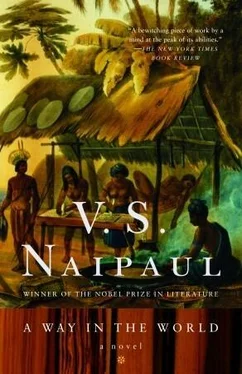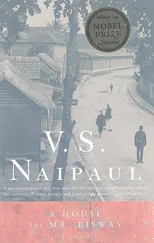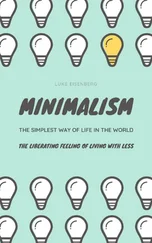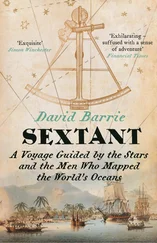The expedition itself — which took back loads of marcasite sand to England as “gold ore”—was an absurdity; and Wyatt’s account was too inflated. It wasn’t published. It was forgotten, and, with it, Wyatt’s account of the night march which, remarkably, provides the only witness — the houses, the fires, the cooking pots, the war-pipes in the night — of the still autonomous aboriginal life of the island. When Wyatt’s account was at last published, in London in 1899, a scholarly series, three hundred and four years after the event, the aboriginal Indians had ceased to exist for almost a century; and their grounds had become home for other people.
Three centuries for Wyatt’s witness to be disinterred; and seventy years or so after that for the aboriginal land, hidden below bush, to be exposed.
Once exposed, the land quickly altered. People from agricultural villages near and far began to squat on it. Many of these squatters were Indians, Hindus and Muslims, descendants of nineteenth-century immigrants from India. The huts or shacks they put up were on low stilts. The sloping roofs were of corrugated iron; the walls were of hollow clay bricks or timber, sometimes new timber, sometimes old, with irregular patches of old paint. Banana trees grew around these huts. Outside the Hindu houses there were prayer flags or pennants on tall bamboo poles. These were put up after certain religious ceremonies: emblems of piety (sometimes competitive, hut against hut): pleas for good luck.
Away from the coast, it was hard to hold on to the idea of the aboriginal and fabulous. What was familiar, the small-island colonial geography one had grown up in, was stronger.
IT WAS different when I crossed the Gulf to Venezuela. Geographically, Trinidad was an outcrop of Venezuela; for three hundred years they had been part of the same province of the Spanish empire. The book of history I had written about Trinidad was also to some extent about Venezuela. When I wrote the book I hadn’t been to Venezuela. I did that not long afterwards, and the land I saw then remained touched with fable; no personal memories or associations got in the way.
The Orinoco remained the river of my story. Even in the Araya Peninsula on the Caribbean coast — a desolation of eroded red earth and scrub, where the modern road simply crumbled away to nothing at a certain point (no one had told me, and the Venezuelan driver was also surprised) — I found something of the special atmosphere I had hoped to find.
In the late sixteenth century the salt-pans of Araya were famous, and Dutch and French and English ships were always here, illegally, though with the quiet approval of local Spanish officials. Every kind of Spanish suggestion was made for stopping the trade in Araya salt. One governor wanted to poison the salt-pans, and wrote to the king of Spain to ask for poison. In 1604, to survey these waters and say what might be done, there appeared a Spanish nobleman with a very famous name: the Duke of Medina-Sidonia, entrusted with this minor task (among others) sixteen years after the defeat of the great Spanish Armada, which he had commanded.
Pelicans — only sign of life and community in the desolation — flew in fishing groups not far above the sea. They would have flown in that kind of formation four hundred years before, or a thousand years before. Their awkward, prehistoric shape, their power, their grey-brown colour, which was the colour of the beachless sea, the light, the unstable colours at midday of water and sky and barren earth, all this seemed to take me back to the beginning of things.
In other parts of Venezuela I found tropical woodland like the woodland I had got to know as a child and thought very special.
During the war, for two years or so after my eighth birthday, we moved from the town to the forested hills to the north-west of Port of Spain. This was an area of old cocoa and citrus estates, half derelict after various kinds of plant disease and the long Depression. At that time I thought of myself as a town boy; I didn’t like the idea of the country. But this wasn’t the kind of country I had known, and I liked it as soon as I saw it: the cool green hills, the narrow valleys, the emptiness, the general feeling of forest and bush.
The bush was full of surprises, found objects, remains of the old estate: avocado and citrus trees, coffee bushes and tonka-bean trees (the tonka bean used for flavouring cocoa) and cocoa trees that in spite of disease and choking bush still bore fruit. Somewhere in the cocoa woods was the old concrete cistern of the estate house. It was useless now, clogged with compacted dirt and sand and dead leaves; but the clear-water spring that had fed the cistern still ran, though in its own rippled channels now, over clean brown sand and between dead leaves. The samaan trees that had been planted years before to shade the cocoa trees were now aged, branching giants, themselves overgrown with moss-hung parasites: wild pines, lianas, ferns, vines. When you walked below the trees you could feel a dust, from dried moss and other dead vegetable matter, drifting down.
We lived disordered, deprived, and uncomfortable lives; we were like campers in someone else’s ruins; and we were glad to go back to the town when the time came. But then I grew to understand that those months in the cocoa wilderness had given me my most intense experience of the beauty of the natural world. They had fixed for me the idea of the perfect tropical landscape.
The place itself soon changed. We ourselves had been there at a moment of change. We had been part of the change, and this change speeded up after we left. The area — which we had known as an area of ’pagnols, patois-speaking Spanish mulattoes connected with the old estates — began to be settled by poor blacks, many of them illegal immigrants, from the small islands to the north. It became crowded and noisy and confused, like the hillside slums to the east of Port of Spain.
That was what was presented to me — suddenly, completely — when I went there again after my first six years abroad. The tops of the green hills, too steep to be damaged, were as I remembered them; the bush on one side of the road was still there; but on the other side of the road, where there was no bush or woodland, only settlement, I could no longer work out the contours of the land and couldn’t tell where old things, even the old estate house, or the formal gardens, or the cistern in the woods, had been. Half the landscape I had cherished was still miraculously there, on one side of the road; but that only added to my memory of what had been erased. I took care after that to stay away. I didn’t like even getting near the road (itself much changed) that led to the valley.
And now in Venezuela in many places I found again the vegetation and colours of that Trinidad valley. In Venezuela at that time, with its oil boom and city-property boom, estates and plantations were being neglected; and I was able to rediscover the very atmosphere of the cocoa woods I had known. Once for many miles I drove beside such a cocoa wood. There had been nothing in Trinidad on this scale; and nothing like the smell of vanilla — from the vanilla vine — which was now added to the damp cocoa-wood smell of earth and leaf and mould.
Trinidad was an outcrop of the South American continent. Venezuela was part of the continent, and everything was on a continental scale. The geography that at one time in Trinidad had seemed logical and complete — and had then, because of the growth in population, begun to feel like a constriction — was here immeasurably magnified: the mighty Andes for our little Northern Range, now built up on its lower slopes for many miles, and scaffolded with immigrant shacks around Port of Spain; the empty Venezuelan llanos , a country in itself, for our sugar-cane plain, which from certain high points could be taken in at a glance; the wonder of the many-branched Orinoco for the single channel of our narrow Caroni.
Читать дальше












